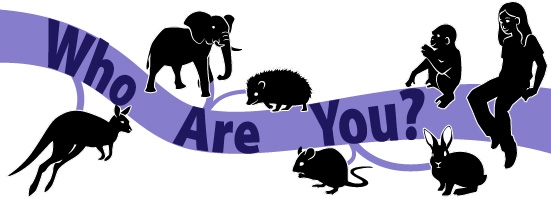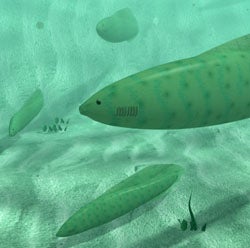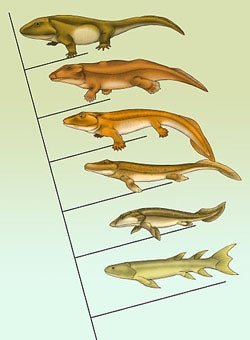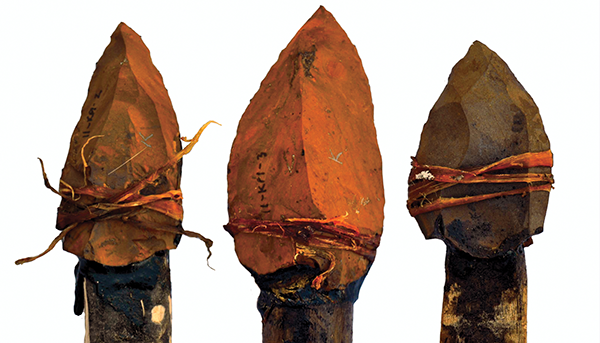
As Vertebrates
 After sitting in school all day, you reach back and rub your sore neck. Along the back of your neck and your upper back, you feel hard knobs just under your skin. These are your backbones, or vertebrae, and they make up your spine. Your spine protects nerves and blood vessels that run from your brain to the rest of your body. While these bones may seem entirely normal to you, not all animals have a spine.
After sitting in school all day, you reach back and rub your sore neck. Along the back of your neck and your upper back, you feel hard knobs just under your skin. These are your backbones, or vertebrae, and they make up your spine. Your spine protects nerves and blood vessels that run from your brain to the rest of your body. While these bones may seem entirely normal to you, not all animals have a spine.
Having a spine is a major feature of vertebrates—back-boned animals. Vertebrates first appear in the fossil record about 500 million years ago. These first vertebrates looked like small fishes but didn't have the elaborate fins of modern fishes. Some of these early vertebrates (or their close relatives) include Pikaia and Haikouichthys. These creatures looked a bit like a mix between a fish and a flat worm, and they lived 525 to 500 million years ago.
Out of the water
The earliest vertebrates lived in the water, but you live on land. What do fossils tell us about how vertebrates moved from water to land?
 The earliest tetrapods (vertebrates with four limbs, like a frog, a cat, or you) evolved about 375 million years ago. Their ancestors were lobe-finned fishes, like Eusthenopteron. Some of the features that link lobe-finned fishes with the earliest tetrapods have to do with the fin bones of the two groups. The pattern is the same in both fins and arms—one big bone (your humerus) connected to smaller bones (your radius and ulna).
The earliest tetrapods (vertebrates with four limbs, like a frog, a cat, or you) evolved about 375 million years ago. Their ancestors were lobe-finned fishes, like Eusthenopteron. Some of the features that link lobe-finned fishes with the earliest tetrapods have to do with the fin bones of the two groups. The pattern is the same in both fins and arms—one big bone (your humerus) connected to smaller bones (your radius and ulna).
Many transitional fossils show us how these early fin bones evolved to support the body weight of the first vertebrates that lived on land. One of the most famous is Tiktaalik. Tiktaalik has a mix of lobe-finned fish and tetrapod features, and probably used its forelimbs (or forefins) to splash around in shallow water 375 million years ago.
Be Part of
Ask An Anthropologist
By volunteering, or simply sending us feedback on the site. Scientists, teachers, writers, illustrators, and translators are all important to the program. If you are interested in helping with the website we have a volunteers page to get the process started.

